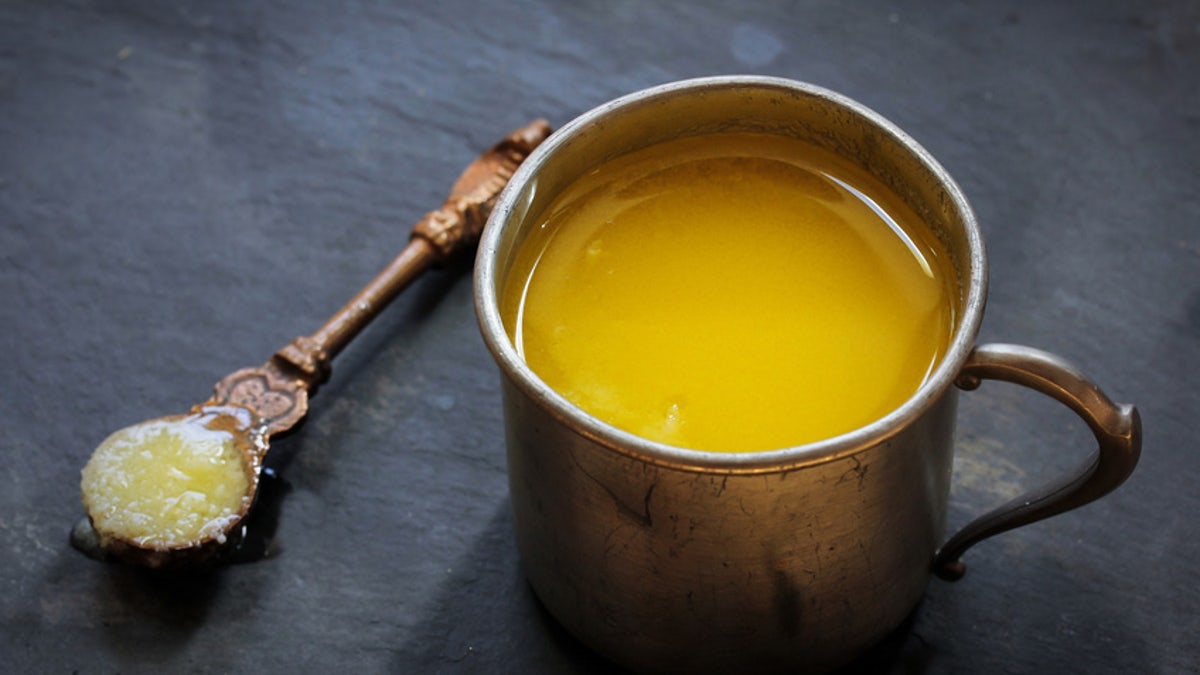
Not all butters created equal.
When you're baking, butter is perfect just how it is, whether creamed into cookies or rubbed into a perfectly flaky pie crust. But on the stove, it presents a bit more of a challenge.
Butter can't take a lot of heat in a skillet, so when you, say, make pancakes, it can become smoky and acrid.
The problem is the proteins. Butter is made up of three main components: fat, water, and milk solids, which is where the proteins are found. When butter melts, the water evaporates, and the solids, having nowhere else to go, break down and burn. They don't make up a huge proportion of the butter—less than 5 percent, whereas about 80 percent of butter is fat—but they can still ruin a dish if not properly handled.
Humans, being resourceful, have innovated our way out of this problem with clarified butter and ghee. Certain locales prefer one over the other, but both are more or less pure fat, like any other cooking oil. And both allow butter to be used for higher-heat cooking, where it can impart a rich flavor rather than a burned one—say, in this roasted turkey or in this yellow dal.

Ghee or clarified butter - common ingredient in Indian cooking (vm2002)
More From epicurious
So what's the difference between the two? And how are they related to brown butter?Let us clarify that for you!
Clarified butter
Butter is an emulsion of fat and water, but one that you're trying to break when you clarify it—you're trying to remove everything that's not fat. Take a bunch of butter and melt it in a saucepan over a low flame for a little while. It'll foam, which means the water is evaporating. You'll see it separate into yellow fat—that's the good stuff—and white milk solids: that's the stuff you're trying to get rid of. Here recipes often call for the solids to be skimmed off the top, and the clarified butter to be poured into another container, leaving any stragglers behind at the bottom of the pan; you can also strain it through cheesecloth.
The product that results will keep much longer than butter, and it'll have a broader range of uses in the kitchen. Cook stuff in it! Sear chicken! Sautée vegetables! Treat clarified butter like you would another cooking oil—this one just happens, blessedly, to taste like butter.
Ghee
Ghee, a popular fat in Indian and South Asian cooking, is clarified butter taken a step further: rather than stop cooking when the milk solids separate, for ghee you want to keep going until the solids brown and fall to the bottom of the pan. Then strain the mixture.
It'll have all the cooking benefits of clarified butter—with the addition of a nutty, toasted flavor. You can buy ghee, just as you can buy clarified butter, but if you've got some butter on hand and about ten minutes of free time, there's really no need to.
Brown butter
The indelicate sibling of ghee, brown butter (buerre noisette, in the French) is simply butter that's been heated until the milk solids have turned browned and nutty-tasting—no clarification, no straining, no nothin'. So unlike the above fats, brown butter is only suitable as a cooking medium if it's used in a gentle saute (say, with these sweet potato gnocchi) or if it's not on the stove for too long, as in these quick-seared scallops.
Mostly, brown butter is a flavoring agent; it is the perfect complement to a crab roll, and a smart dressing for vegetables. You can also stick brown butter in the fridge and, when it's firm again, use it as you would regular butter in any baking project, where it provides an unparalleled flavor. A batch of blondies is practically naked without it.
